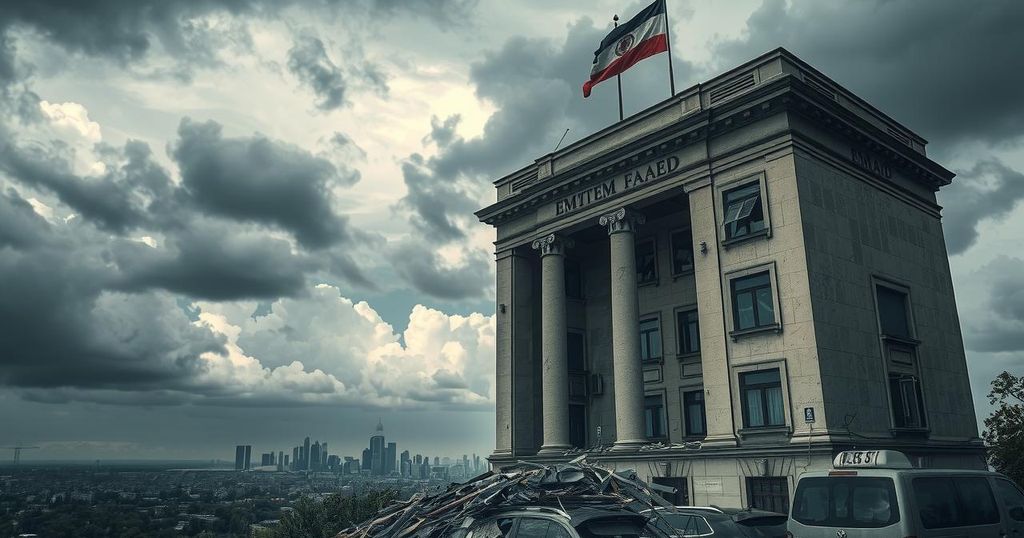Gunshots were reported in Goma, DR Congo, where Congolese soldiers clashed with Rwandan-backed militias amid protests against foreign embassies in Kinshasa. The violence has displaced half a million people this year, leading to humanitarian crises. The UN Security Council is scheduled to meet to address the escalating tensions and seek effective diplomatic interventions to stabilize the situation.
Gunfire erupted within parts of Goma, Democratic Republic of Congo, as its soldiers engaged militia groups allegedly supported by Rwandan troops, amid violent protests against international inaction in Kinshasa. The tumult began after the M23 group and Rwandan forces advanced into Goma, raising alarm over a humanitarian crisis that has displaced 500,000 individuals this year. Protesters attacked embassies, including those of Rwanda, France, Belgium, and the United States, expressing their fury over the violence and lack of support.
Despite the intermittent gunfire, Goma saw a marked presence of M23 fighters, with reports indicating rising instances of looting and theft carried out by involved soldiers and militias. Hospitals reported at least 17 fatalities and 367 injured from the clashes as tensions escalated and the humanitarian situation worsened, prompting temporary cessation of food assistance in the region. The United Nations expressed concerns about potential food shortages and the risks of laboratory pathogens spreading amidst the chaos.
With increasing international scrutiny, the United Nations Security Council is convening to address the escalating situation. The DRC government called for robust UN measures against Rwanda, while Rwanda maintains its presence aims to combat the FDLR militant group, tied to the Rwandan genocide’s aftermath. High-level discussions, including an emergency summit involving Congolese President Felix Tshisekedi and Rwandan President Paul Kagame, are expected to follow the crisis’s progression.
The M23 group, which previously occupied Goma briefly in 2012, has seen a resurgence since 2021, exacerbating tensions in the resource-rich eastern DRC. A ceasefire failed to sustain peace in August, and recent developments underscore the volatile situation, demanding immediate international attention to prevent further deterioration.
As Goma grapples with violence and humanitarian crises, observers emphasize the urgency for dialogue and intervention. Continued military confrontations risk not only the lives of civilians caught in the crossfire but also regional stability in a historically conflict-laden area.
The Democratic Republic of Congo (DRC) has a long-standing history of conflict fueled by the presence of numerous armed groups, particularly in the eastern region. The resurgence of the M23 armed group, which is Tutsi-led and initially formed in response to injustices faced by the Tutsi community, has intensified territorial disputes, leading to increased military confrontations with Congolese forces and foreign military backing, particularly from Rwanda. This has prompted humanitarian crises characterized by mass displacements and food insecurity, largely exacerbated by inadequate international intervention and support.
The situation in Goma remains precarious as armed clashes intertwine with destructive protests against perceived global negligence. The escalating violence and humanitarian strain highlight the need for urgent dialogue and a robust international response to facilitate peace and stability in the region. Without decisive action, the cycle of conflict may continue to adversely affect an already vulnerable civilian population.
Original Source: www.wfxg.com




